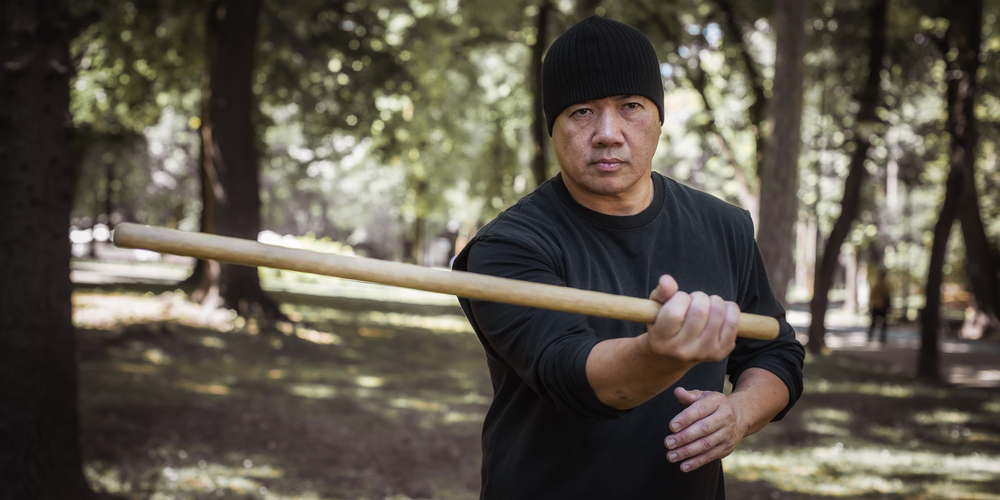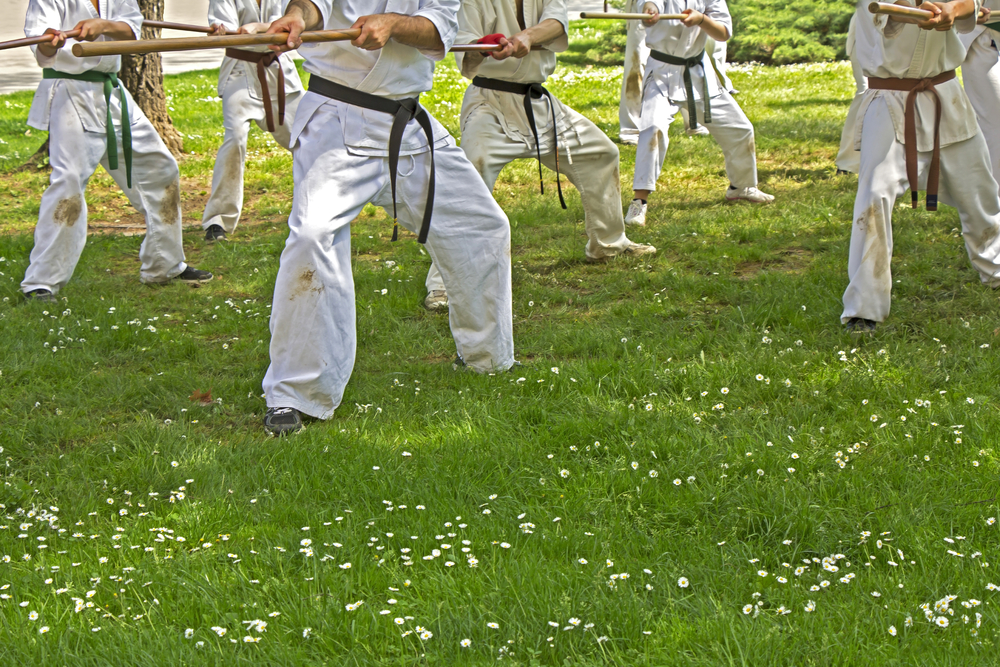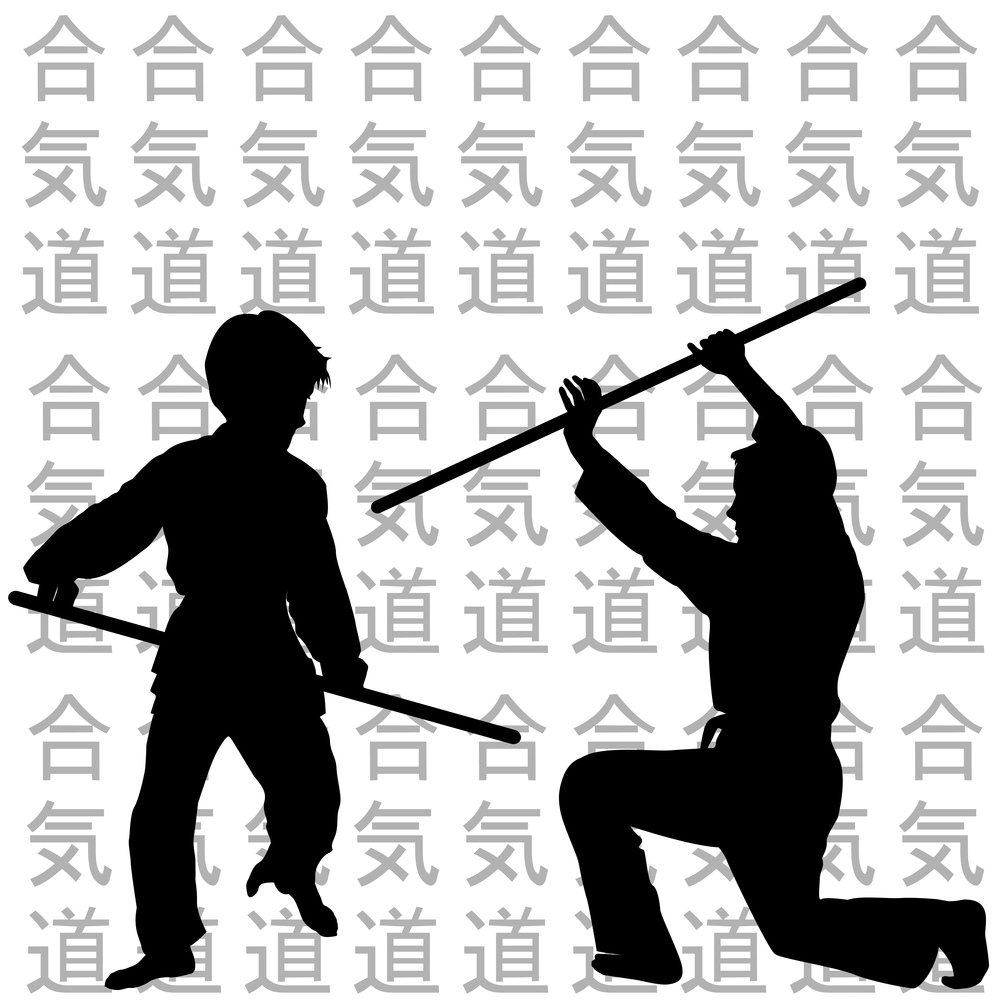The Bo staff is likely the oldest and simplest weapon used in combat and self defense.
Being very versaile as a manual labour tool, readily available and relatively simple to use the, Bo is highly effective in combat and popular across many different fighting styles.
A major feature of the Bo is its length which allows for an effective counter and defense against shorter edged weapons such as knives.
Across many ancient cultures the Bo or similar poles and stick-type weapons were used as practical everyday tools as well as weapons for self defense and combat.
In this post we look specifically at the Bo and it’s history and origins from Okinawa, Japan.
We also discuss similar type weapons from different martial arts and how this simple yet versatile tool has become an intricate part of many different martial arts weapons systems.
Origins of the Bo as a Weapon
The Bo originated in Okinawa region which is to the South of the main Japanese islands where Tokyo is located.
Okinawan people are distinctly different from Japanese people in terms of language, culture and ethnicity.
Today Okinawa is part of the nation of Japan, but it the islands have contributed much to Japanese culture and especially martial arts, including originating the Bo.
The Bo is thought to have come from a wooden staff that was slung across the shoulders in order to transport buckets of water on each end.

The Bo staff as a weapon arose out of necessity and self protection for the Okinawan people. Weapons were banned in Okinawa by the Emperor Sho Shin to promote peace in 1477.
However following invasion of Okinawa by enemy forces, locals used farming tools as weapons of self defense. It was out of this necessity for self defense that the Bo staff as a weapon was born.
The Bo Staff in Different Martial Arts
The Bo staff as most people know it, comes from Japan and specifically from the Okinawan Islands in the South.
But being such a simple weapon commonly used for everyday work tasks, the Bo is also known as choong bong in Korean; pang in Cantonese and bang in Mandarin.
In Okinawan it is known as kun.
The Bo staff is also used in martial arts including Aikido, Bojutsu, Hapkido, Kung Fu and Taekwondo among others..
What makes the Bo staff distinct from other martial arts stick/pole type weapons is the length of the Bo staff.
Systems such as Kung Fu and Taekwondo also commonly use only one end of the Bo staff while traditionally in Japan both ends can be used in fighting.
Fighting arts such as kali and escrima expertly utilize shorter fighting sticks and are adept and fighting with two stick at a time.

But the longer Bo staff is also found in different regions and acrss different martial arts.
Some of the more commonly known martial arts that use the Bo staff or similar type of weapon are discussed below.
Japanese Martial Arts
Okinawa being ethnically and culturally distinct from mainland Japan, has birthed a distinct fighting style which has influecned JApanese martial arts espeically KArate.
The Bo staff is used in Karate as well as Aikido and Okinawan Kobudo styles. It has variations in length and size.
The most popular is the rokushaku bo which is commonly 6 feet in length.
Bo staff in Chinese Kung Fu
The Chinese long staff is known as one of the four major weapons in Chinese kung fu which includes the spear (qiang), Sabre (dao) and straight sword (jian).
It is also referred to as the “Grandfather of all weapons” in Chinese Kung fu.
The kun is made with a thicker end at the base and made thinner at the tip.
This differs from the Bo staff from Okinawa which maintains the same thickness at both ends.
Bo Staff in Korean Martial Arts
In Korean martial arts the staff is called bong in Korean and it is recognized as the oldest weapon. The bong is characterized as either:
- Jung Bong – Middle staff.
- Jang Bong – Long staff.
The chong bong or middle staff is commonly used in Korean martial arts such as Taekwondo and Hapkido.
The middle staff measures between the users eyebrows and top of the head.
It is primarily used as a single-ended weapon, similar to the Chinese staff.

What is the Bo Staff Made of?
The bo is usually made with hard wood or a flexible wood, such as red or white oak, although bamboo and pine wood have been used. Rattan wood is also commonly used due to its flexibility.
Modern variations of the bo can be crafted from special hardwoods.
In modern competition lighter weight graphite is used to make Bo’s that allow for performance of visually stunning techniques rather than combat.
Bo are usually 1.8 metres or 6 feet in length.
The popular rokushaku bo takes its name from the length of the staff. Roku meaning ‘6’ and shaku being a measure of about one feet in length.
Bo staff techniques
The traditional Bo staff from okinawa is a versatile weaopon, easy to make and non-threatening in appearnce.
Unlike Chinese and Taekwondo styles, the Okinawan bo staff can be used as a double sided weapon.
It can be used indifferent motions including striking, spinning, blocking, parrying, poking and pressing.
The common Bo staff techniques are:
Basic techniques:
- Basic two hand spin
- Basic grips
- How to Bow with the Bo
Spinning:
- Around The Leg Spin
- Behind The Back Spin
- Downward Flower With One Hand
- Figure Eight
- Front Spin
- Neck Spin or Neck Roll
- Palm Spin
- Shoulder Spin
- Wrist Roll With One Hand
- Wrist Roll With Two Hands
Strikes:
- Cross Strike
- Down Strike
- Downward Smash
- Hook Strike
- Low Strike
- Poke
- Punch
- Side-To-Side Strike
- Sweep
- Thrust
- Up Strike
Blocks:
- Downward Rowing Block
- Low Block
- Side Block
- Overhead Block
- Pressing Block
In addition to techniques using the Bo, it is also important to know defense techniques against the Bo which are also taught in different systems.
Bo Staff Training
As the Bo staff is a relatively large weapon made of sturdy hardwood, it is also a very useful tool for physical conditioning.
Training with the Bo staff helps to build upper body strength and strength in the hands, wrists arms and forearms, essential for unarmed combat.
In modern day competition tournaments, lighter and thinner versions of the Bo staff are used which allow for more flashy and spectacular techniques that judges favor.

Bo Katas:
As with unarmed set forms or katas, Bo katas or forms are also widely taught and trained in each of the different martial arts systems.
Bo katas practice offensive and defensive staff techniques in a specified pattern of steps and movements.
These Bo katas are often training tools for higher level Karate students.
Kata’s are used to improve a student’s physical conditioning, muscle memory, focus/concentration and balance.
Below are some of the Bo katas used mainly in Karate.
- Chatan Yara No Kon Sho
- Chito-Ryu Kata – Sakugawa No Kon
- Isshin-Ryu Kata – Shishi No Kun
- Isshin-Ryu Kata – Tokumine No Kun
- Isshin-Ryu Kata – Urashi No Kun
- Matayoshi – Choun No Kon
- Matayoshi – Sakugawa No Kon
- Matayoshi – Shishi No Kon
- Matayoshi – Shushi No Kon or Suishi No Kon
- Matayoshi – Tsuken No Kon
- Ryu Kon Kai – Choun No Kun (Bo kata)
- Ryu Kon Kai – Fukyu Bo (Bo kata)
- Ryu Kon Kai – Sakugawa No Kon (Bo kata)
- Ryu Kon Kai – Shushi No Kun (Bo kata)



